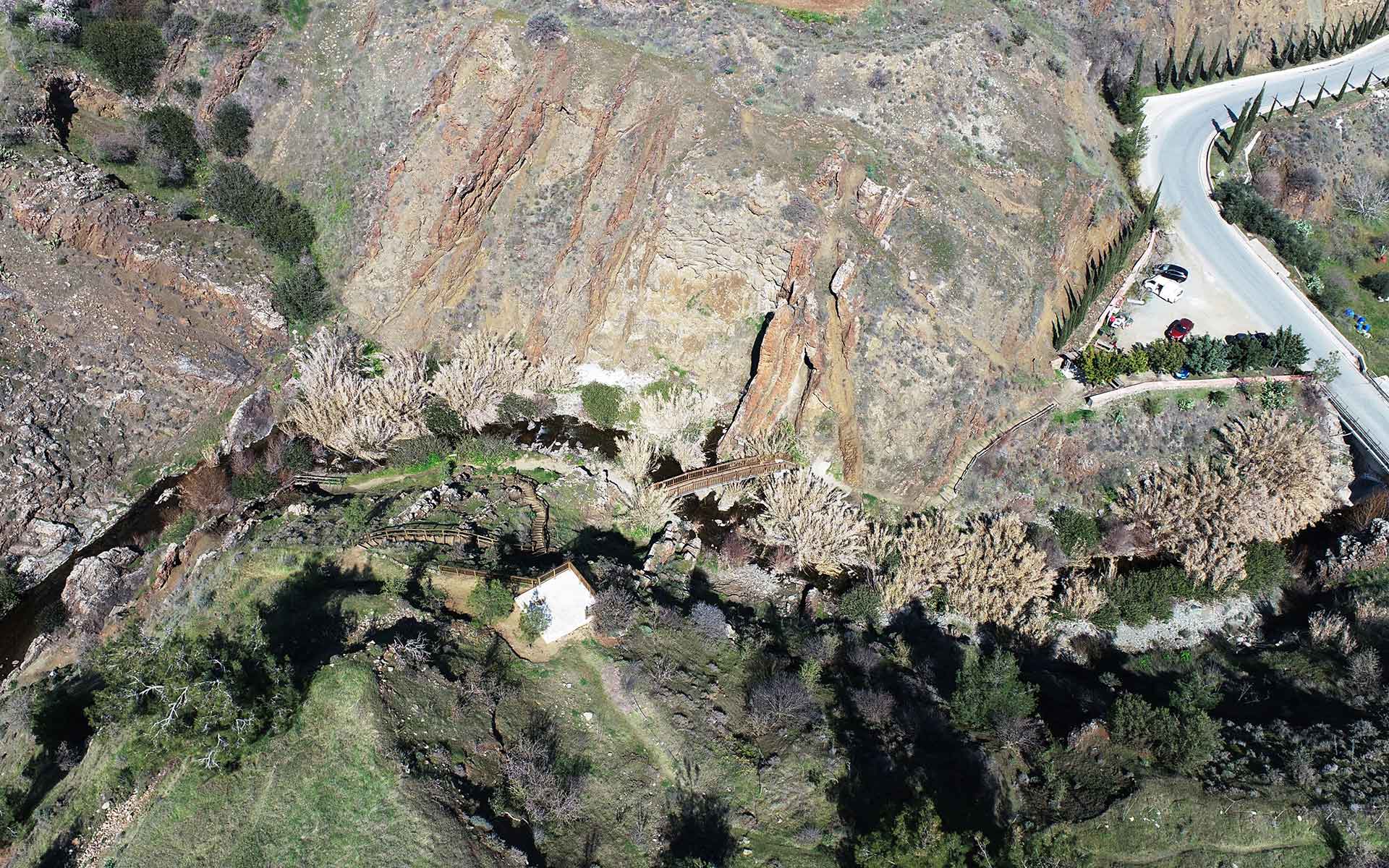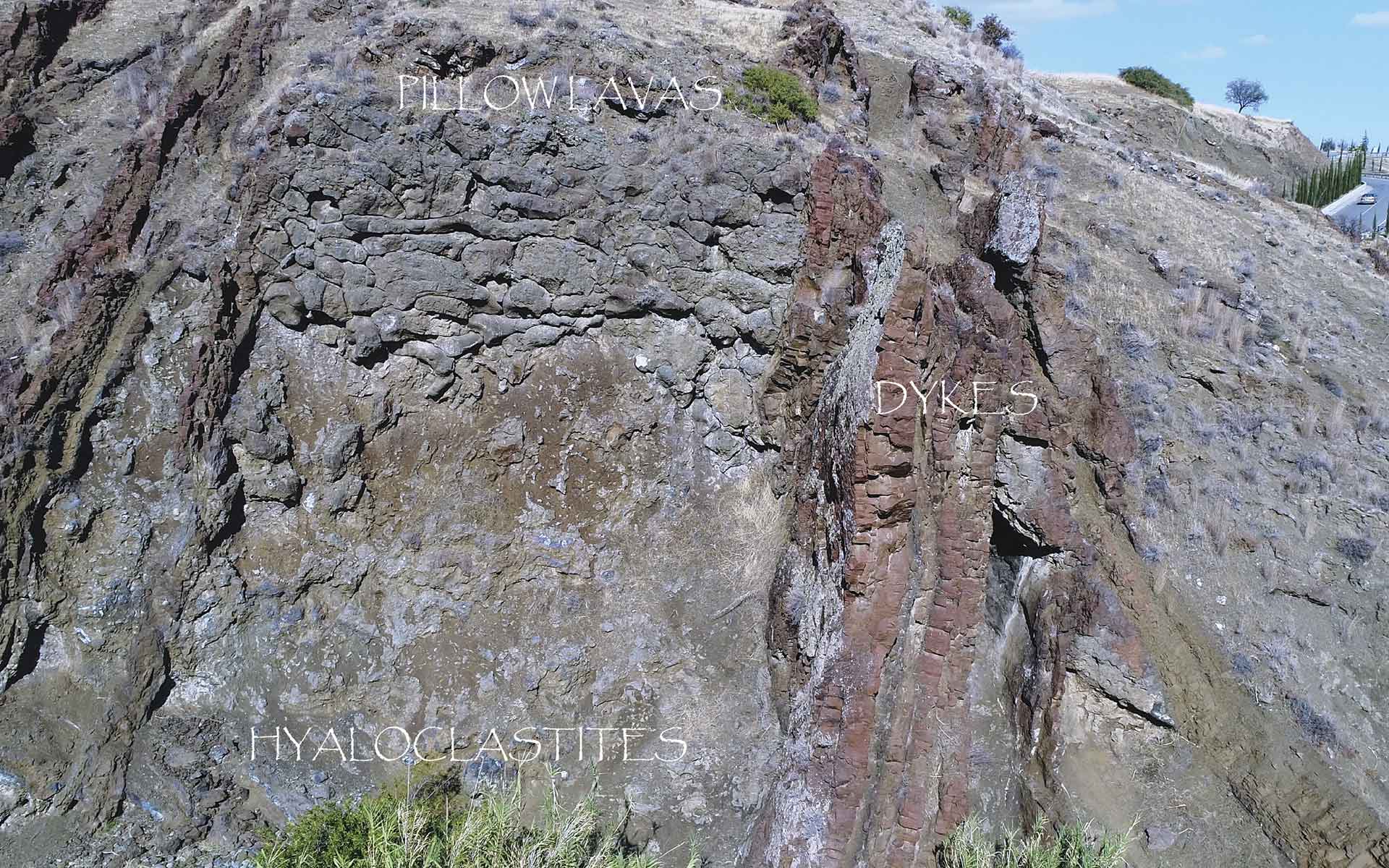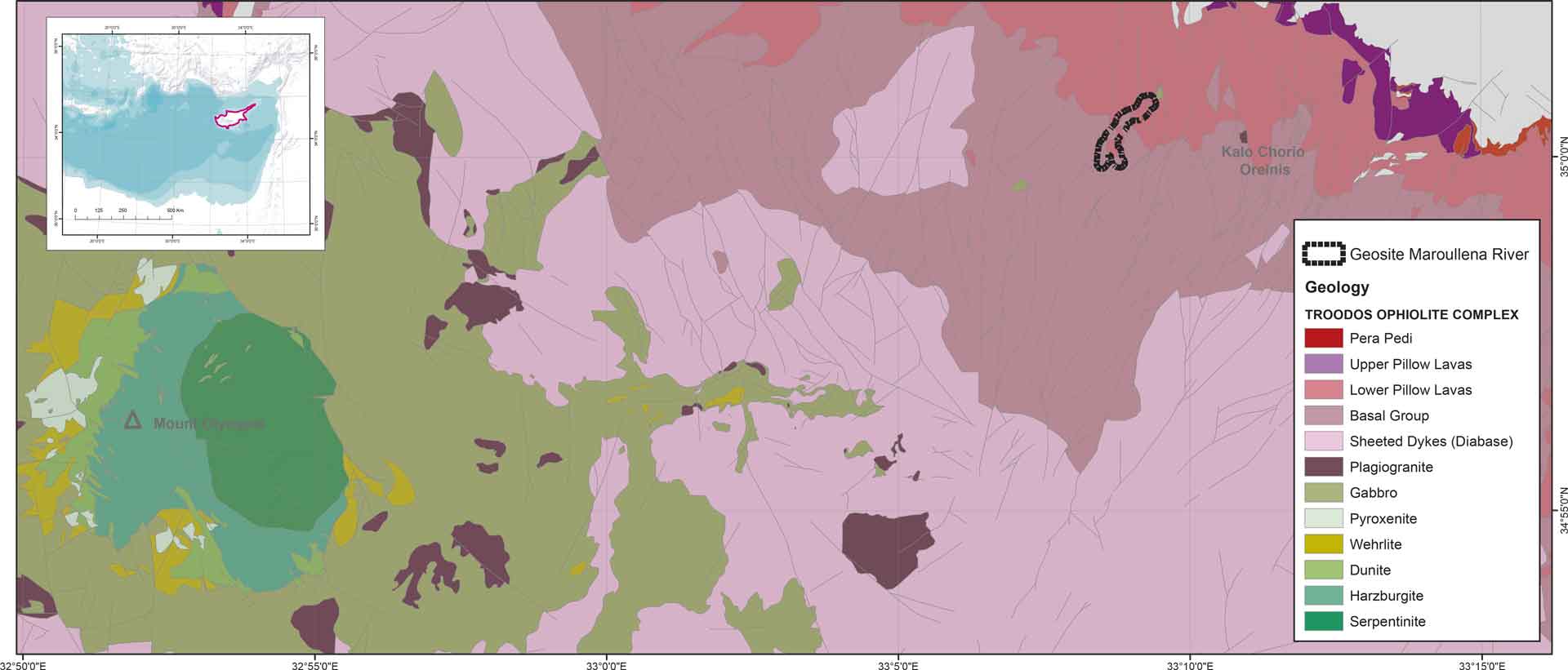
The Akaki (Maroullena) River canyon consists of volcanic and intrusive rocks that were formed in the depths of the ancient Neotethys ocean in Upper Cretaceous.
Geological Period
Upper Cretaceous
Main geological interest
Igneous and Metamorphic petrology
Volcanology
Location
Kalo Chorio Oreinis, Nicosia, Cyprus
35°00’42”N, 033°09’13”E
The Akaki (Maroullena) River canyon consists of volcanic and intrusive rocks that were formed in the depths of the ancient Neotethys ocean in Upper Cretaceous.
The transportation conduits through which the magma reached the ancient Neotethys ocean-floor forming the pillow lavas 92 million years ago.
This site illustrates in a remarkable way the transportation conduits through which the magma reached the ancient Neotethys ocean-floor approximately 92 million years ago and subsequently erupted resulting in the creation of hyaloclastites and pillow lavas. The dykes contain abundant elongate nearly horizontal overlapping vesicles, that are excellent evidence of the lateral magma flow direction within the transportation conduits. Some dykes exhibit a pitch-black glassy zone testifying to the strong chilling effect of water-saturated hyaloclastite during intrusion. At this site one can study all these geological processes that nowadays occur at the depths of recent oceans at divergent margins.
- Geological description
One spectacular exposure of the Troodos Ophiolite volcanic sequence is identified at a canyon of the Akaki river, which is a classic location for the study of these rock types. A lower unit of hyaloclastites and an upper unit of pillow lavas are cut by swarms of near-vertical dykes. The hyaloclastite is a breccia of black volcanic glass that formed from underwater volcanic eruptions. The pillow lavas were formed by the extrusion of high-viscosity lava on the Neotethys ocean seafloor near the axial eruption center. The dykes are of basaltic composition and constitute the transport conduits through which the magma flows towards the surface of the ocean-floor.
The observed chilled margins are an indication of several events that predate one another. The elongated vesicles that were examined at the site, indicate that the magma flow direction was nearly horizontal, contrary to the notion that magma only flows upwards and intrudes vertically. Another unique process that has been recorded at this site is that the vesicles, as well as the cracks that were created by the rapid cooling of lava, had been later in-filled with chalcedony as a result of the circulation of low temperature gel-like hydrothermal fluids rich in silica.
- Scientific research and tradition
Scientific research focuses on the geochemical composition of the magma, the palaeomagnetic evolution of the Troodos Ophiolite in conjunction with the the tectonic reconstruction of the Neotethys ocean and evidence on the creation of the dykes/pillow lavas/hyaloclastites and the direction of magma flow.
- Reference
Bear, L.M. (1960) The geology and mineral resources of the Akaki-Lythrodondha area. Nicosia: Government of Cyprus (Memoir / Geological Survey Department, Cyprus, no. 3).
Coogan, L.A. et al. (2017) ‘The role of low-temperature (off-axis) alteration of the oceanic crust in the global Li-cycle: Insights from the Troodos ophiolite’, Geochimica et Cosmochimica Acta, 203, pp. 201–215. Available at: https://doi.org/10.1016/j.gca.2017.01.002.
Coogan, L.A. and Gillis, K.M. (2018) ‘Temperature dependence of chemical exchange during seafloor weathering: Insights from the Troodos ophiolite’, Geochimica et Cosmochimica Acta, 243, pp. 24–41. Available at: https://doi.org/10.1016/j.gca.2018.09.025.
Edwards, S. et al. (2010) Cyprus. illustrated edition. Harpenden: Terra Publishing (Classic Geology in Europe, 7).
Morris, A. (1990) Palaeomagnetic studies of the Mesozoic-Tertiary tectonic evolution of Cyprus, Turkey and Greece. PhD Thesis. The University of Edinburgh. Available at: https://era.ed.ac.uk/handle/1842/12687.
Morris, A. (1996) ‘A review of palaeomagnetic research in the Troodos ophiolite, Cyprus’, Geological Society, London, Special Publications, 105(1), pp. 311–324. Available at: https://doi.org/10.1144/GSL.SP.1996.105.01.27.
Schouten, H. and Kelemen, P.B. (2002) ‘Melt viscosity, temperature and transport processes, Troodos ophiolite, Cyprus’, Earth and Planetary Science Letters, 201(2), pp. 337–352. Available at: https://doi.org/10.1016/S0012-821X(02)00709-4.
- Author(s)
Efthymios Tsiolakis.
Geological Survey Department, Cyprus.
Christodoulos Hadjigeorgiou.
Geological Survey Department, Cyprus.
Vasilis Symeou.
Geological Survey Department, Cyprus.


